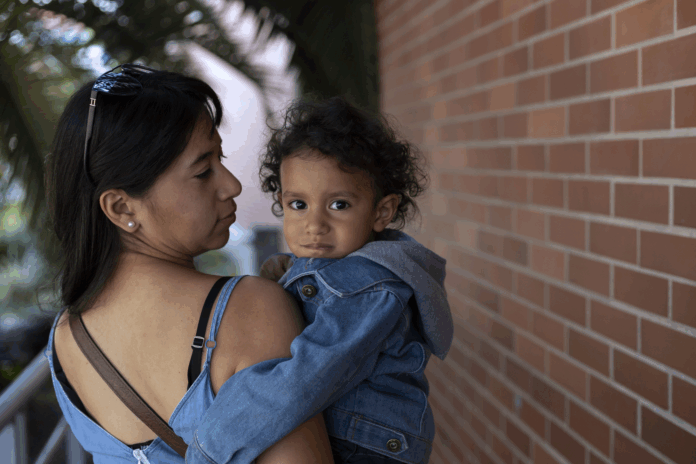One of the misfortunes of patriarchy, amongst many others, is the paradoxical position of the father. The ‘head of the family’, he manifests in our minds as a silent presence exerting authority but his figure is largely missing from the dimension of parenting. The ideology of Patriarchy operates on universalising paternal dominion, having the father be absent (emotionally and/or physically) from the family in real-time but attributing all power to him through symbolic means.
At its foundation, Indian psychoanalysis needs the father to be physically absent but symbolically present. This allows him to act out the script of the Oedipal triangle of its classical counterpart. Father enters the mother-infant dyad from the outside, as a figure of authority, culture, and reality. Such a spot allows his arrival to be conceived of as a form of salvation, of the children – especially the son – being able to separate from the mother and mature further.
But something more complex and intricate seems to be taking place in the therapeutic space, quite different from this linear development.
My clients, primarily women, are reflecting on their upbringing from different perspectives of a younger and older generation. Living in nuclear and joint families, they are pulling into limelight what many psychoanalytic theories have naturalised: the minimal or secondary roles of fathers.
While absent and/or dead fathers have been written about, my clients are also questioning the emotional and social void left when the asymmetry of parenting is due to cultural constructions of what defines a ‘parent’’. Paternalistic assumptions in psychoanalytic theories have resulted in distancing fatherhood from its experiential facet and a universal hyperfixation on the mother-child bond. What this means is that the patriarchal assumptions which are the foundations of psychoanalytic principles redefine parenthood for us. It naturalises motherhood and creates a picture of fathers which does not involve them deeply in parenting.
Analysts and mental health activists have pointed out how classical theories and Indian psychoanalysis often overlook idiosyncrasies of men and women, leaving little space for discussion about the quality of fathering and mothering. One such work is Bhargavi Davar’s Mental Health of Indian Women: A Feminist Agenda, in which she ardently analysed the foundations of Indian psychoanalysis.
“But she is naturally caring”: The burden of care on women
In her reading of works of Sudhir Kakar, she finds that there are two main assumptions which form the bedrock of their school. First, of uncritically naturalising the mother-child bond, mystifying it to any outside viewers and second, of the absence of fathers in parenting. The danger of not seeing fathers as a primary object is to destroy the subjectivity of the mother and result in a pathologizing of mothering. In other words, when a theory about the psyche does not position fatherhood as primary for a child, it risks harming not only the father but the mother as well.
We can observe this in the absence of the father as a real figure invested emotionally (not simply physically), as the task of parenting is premised on the notion that the nurturing instinct is inherent in women. Naturalizing the mother-child bond results in the idea of care being gendered, repeating the narrative of male/female- public/private divisions. It also isolates the experience of women who are voluntarily childfree.
Another way to put this is that once we consider the mother-child bond to be ‘natural’, i.e., we assume that women are naturally mothers and that the mother instinct is inherent in them, we also put up gendered divisions on caring. Such an understanding does not give space to choice for women nor does it give any space for the experience of voluntarily child-free women.
At the same time, consequent patriarchal understandings of fathering under the label of ‘tradition’ limit father’s hands-on involvement in the upbringing of their children. This state of affairs places the burden of care on the mother and emotionally isolates the father from the family.
The Mother: From effortlessly caring to a devouring monster
Developmentally, after the state of ‘oneness’ with the mother, all psychoanalytic theory, especially Indian psychoanalysis, positions the mother as a figure one has to separate from. The ‘oneness’ here refers to, what the psychoanalytic theory posits as, the developmental stage of the mother-infant dyad. The infant, with little or no conception of the ego, is dependent psychically on the mother. Maturation is equal to separation from the mother as the infant’s ego develops.
This ‘ritual’ is more a prerogative of the Indian son than the Indian daughter due to their gender, allowing the fathers to consequently embody the idea of liberation. The ‘oneness’ of the maternal dyad which initially is conceived of as highly important for the development of the child later becomes a problematic state of being. It paints the picture of an Indian mother as a cannibalistic monster, always on the verge of eating her children who are later rescued by the father. What this means for the mother is that a developmental stage considered natural initially becomes pathological later.
Psychoanalysis and India: Romantics and reality
While attachment theory has shown the benefits of having an alternative figure like the father to allow children to separate from the mother and Davar does not deny the possibility of mothers becoming highly dependent on their children, especially their sons in a patriarchal context, she writes of the need to actively deconstruct the principles of motherhood and fatherhood within psychoanalysis. The reader must first ask about the degree of control the majority of women in India have over marriage and pregnancy. Also, in situations where there is a lack of social support and individuation for the mother from her children, how does it change our understanding of something like ‘maternal enthrallment’?
On the other hand, the positive role of the Indian father in the development of his daughter’s identity still needs elaboration. In her work stated above, Davar points out to the almost fantastical quality present in accounts such as Sudhir Kakar’s conception of an Indian daughter’s childhood in his book The Inner World. She observes it to be a sharp contrast to the actuality of gender-based violence within Indian families. The upbringing of the daughter is dominantly considered to be the sole domain of the mother, while providing protection is considered the singular duty of the Indian father.
This divorces it from realities of life such as the inevitable emerging sexuality and individuality of the daughter which is dependent on how comfortable both parents are with their own feminine identifications and conceptions of womanhood. In other words, the influence of both parents cannot be overlooked in the upbringing of a girl child. The daughter often sees her femaleness not only through the eyes of the mother, but also the father. As such, a father’s comfort with his own feminine identifications- influenced by his relationship with his own parents- can partly influence a daughter’s relation with her femininity.
Simultaneously, a father’s relationship with his own parents, and therefore parenting or ‘infant care’, also influences how he extends himself to his daughter. These notions of ‘infant care’ can be highly suppressed if shamed by a community, making it difficult for the father to be present as a real figure in the family, especially his role in the psychosexual development of daughters. This shaming can also result in pathologizing a strong father-daughter bond, which would imply that there is a weak or troubled mother-daughter bond.
Care is therefore multigenerational. What I am saying here is that if we continue to demean a father showing affection/concern/care for his daughter beyond the ‘protective role’, the father can find it shameful to be fully present in his daughter’s life. In situations where there might be a strong bond, we may inadvertently end up considering it as pathological or something which can only be possible if the mother-daughter bond is weak. The manner in which parents care for their children is multigenerational.
In India, a growing need to re-conceptualize our notion of fatherhood is underway. This will require a revision of the foundations of Indian psychoanalysis and the blind application of classical principles to the Indian context. A feminist perspective allows us to take into consideration the impact of the social on the psyche and its transmission through generations which we later label as ‘culture’. Further critiques also need to produce works on positive Indian fathering and their impact on the development of children, with an emphasis on the physical and emotional presence of fathers.
References
- Dalton, R. D. (n.d.). The Psychology of Fathers and Daughters. Women & Therapy, 5:2-3, 207-218.
- Davar, B. V. (1999). Mental Health of Indian Women: A Feminist Agenda. SAGE Publications.
- Davar, B. V., & Sundari Ravindran, T. K. (Eds.). (2015). Gendering Mental Health: Knowledges, Identities, and Institutions. Oxford University Press.
- Etchegoyen, A., & Trowell, J. (Eds.). (n.d.). The Importance of Fathers: A Psychoanalytic Re-evaluation (The New Library of Psychoanalysis). Taylor & Francis Group.
- Freeman, T. (n.d.). Psychoanalytic Concepts of Fatherhood: Patriarchal Paradoxes and the Presence of an Absent Authority.
- Harris, A. (n.d.). “Fathers” and “Daughters”. Psychoanalytic Inquiry: A Topical Journal for Mental Health Professionals,28:1, 39-59.Sriram, R. (Ed.). (2018). Fathering in India: Images and Realities. Springer Nature Singapore.
Katyayani Singh
Katyayani Singh is a psychodynamic psychotherapist in private practice, providing online sessions from Delhi, India. She has authored the article, “Qualitative Study of the Mother-Daughter Relationship in the Context of Depression”, published in theThe International Journal of Indian Psychologyand “Becoming Real. What is Melanie Klein’s Depressive Position?” published by IPA Blog.

